
Time for an Eichler Museum!
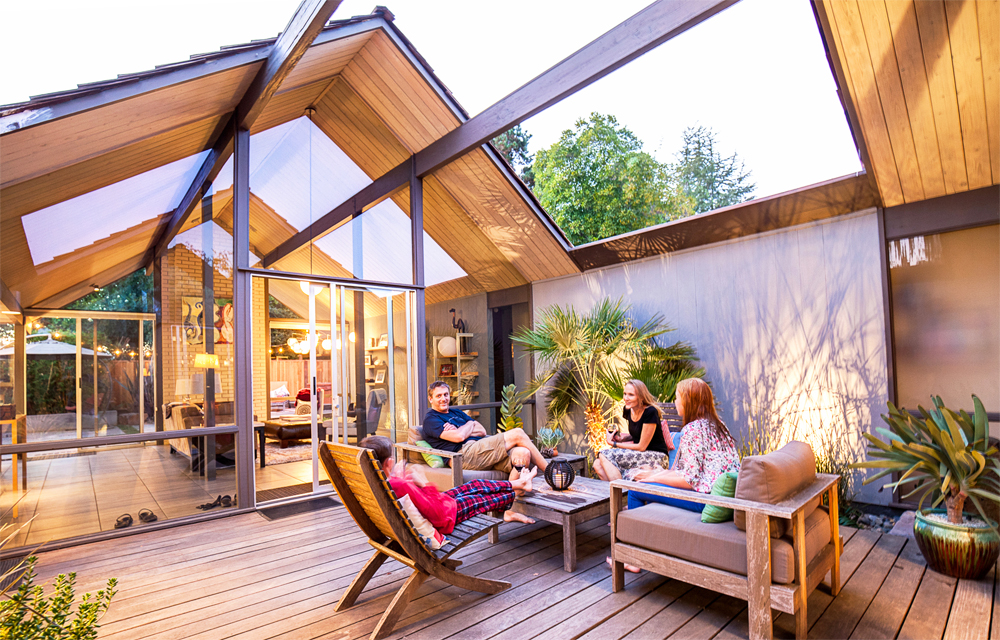 |
|
|
We've been fantasizing lately, wondering what it would take to see an Eichler museum rise up here in the Bay Area—you know, one we'd all be proud of.
Frank Lloyd Wright enthusiasts have their world covered. They can visit Taliesen West in Arizona, Fallingwater in Pennsylvania, the Darwin Martin House and complex in Buffalo, and many more homes and other structures by the man who inspired Joe Eichler to become a modern builder.
What about modern architect Richard Neutra? There are convenient hours to visit his VDL Studio and residence in Los Angeles, and the Neutra House in Los Altos offers tours. There is even a house designed by one of Joe's architects, A. Quincy Jones, that is open for public tours: the grandiose Sunnylands in Rancho Mirage.
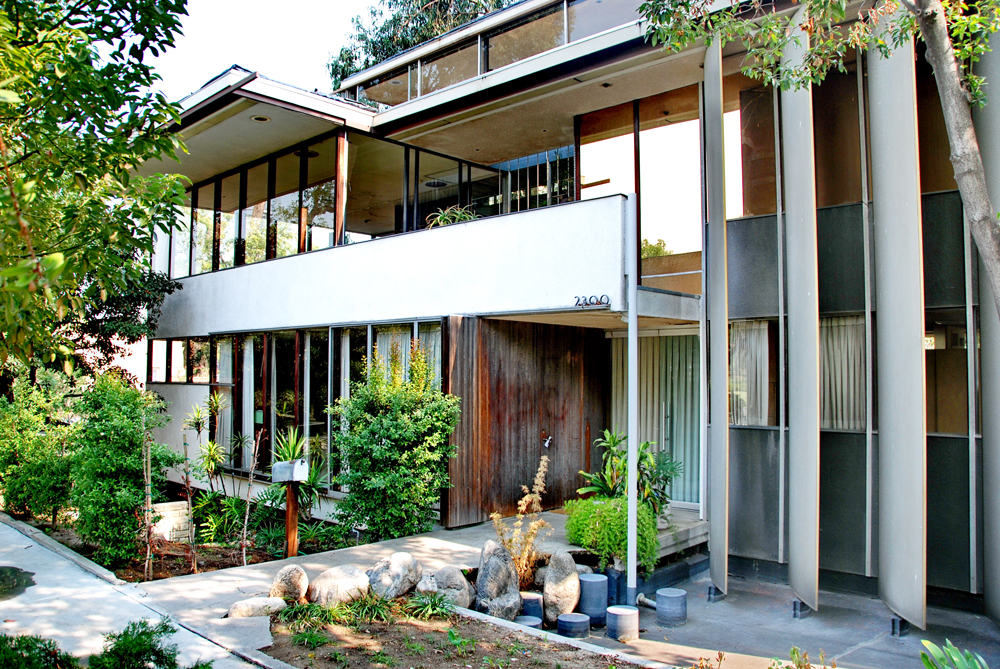 |
|
|
But where can someone interested in experiencing the glories of Eichlers go to get immersed in mid-century modern atrium living?
Don't Joe and his architects deserve to show off their work with a dedicated museum? And not, ideally, in one of the special Eichler houses: the all-steel X-100 in San Mateo; the made-for-the-media two-story 'Life House' in the same development; or even Joe Eichler's former family home, the most Wrightian of all Joe's creations, which will soon be coming onto the market in Atherton.
Wouldn't the best be to show off a typical Eichler, an atrium model from 1957 on? One with everything as it was when Eichler architecture firms Anshen and Allen, Claude Oakland, or Jones & Emmons envisioned it? Mahogany walls, globe lights, the original subtle ceiling stain, the kitchen cabinetry, and grass cloth closet doors?
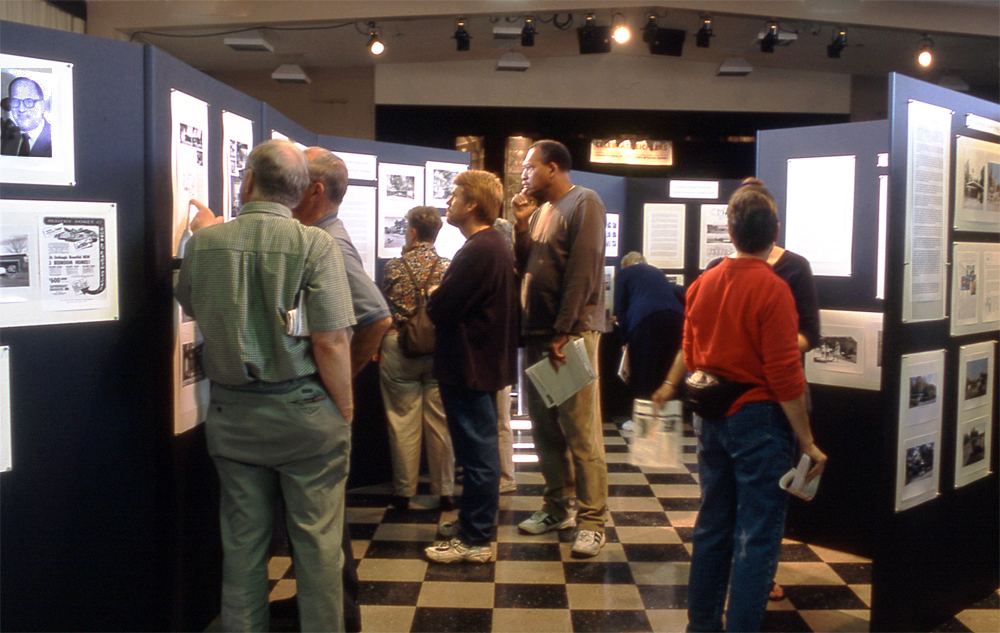 |
|
|
The result would be a period piece of an Eichler, a trip back in time to the 1950s and '60s when these homes were new. Nostalgic, no? And useful, by showing people what Eichlers looked like when they were new, and what their designers intended them to be.
But an Eichler museum house could be much more. Panels filled with historical information about Eichler Homes and Joe's later companies (which built these homes from 1947 to 1974), as were displayed in 2002 at the special 'Celebrate Eichlers' event attended by 2,500 in Palo Alto.
And naturally one would display Eichler ephemera, as Steven Eichler, Joe's grandson, did in 2017 at the Los Altos History Museum: beautifully designed Eichler brochures, cool advertisements, Eichler Homes stock certificates, floor plans, site plans, and renderings.
 |
|
|
A reading room would be nice. There are books about Eichler homes, and many often beautifully illustrated historical reports and surveys that are worth perusing. There are also many books about mid-century modernism in general—and what would an Eichler library be without a full run of CA-Modern magazine issues?
Imagine, though, this Eichler museum as a lively institution serving locals and worldwide audiences alike.
The public could be drawn by the home's furnishings—classics of modern design, maybe with a focus on California designers—including desk sets by Kem Weber, ceramics by Gertrud and Otto Natzler, tapestries by Evelyn Ackerman.
Or traveling shows featuring Scandinavian designs of the '50s? Small shows by modern artists, including those who were associated with Eichler, such as artist/designer/instructor Matt Kahn of Stanford, and Joe's longtime promotional photographer Ernie Braun.
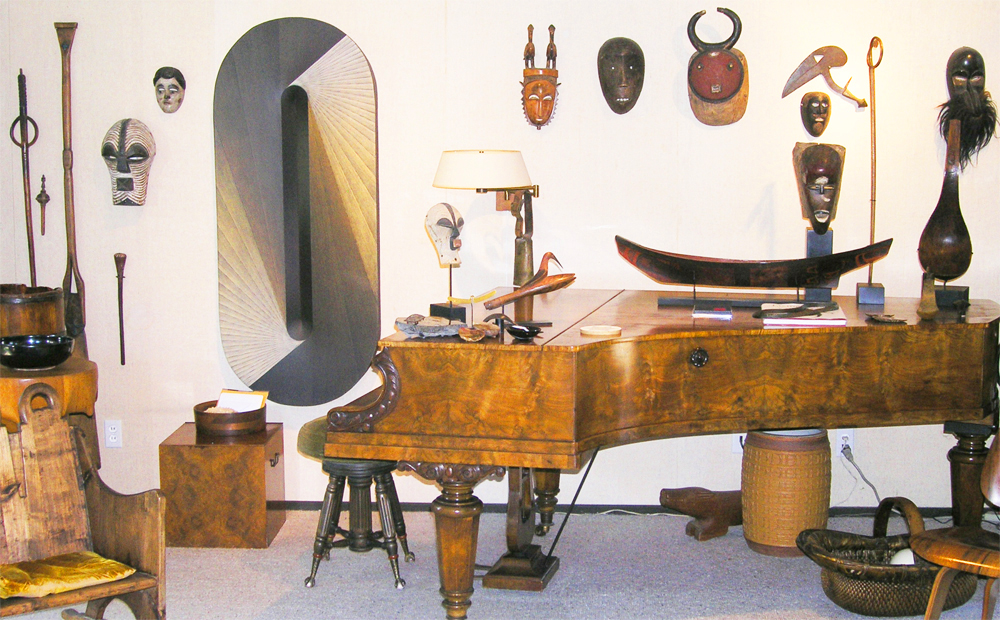 |
|
|
The atrium and backyard too could be used for recreations of gardens by Robert Royston, whose firm did work on so many Eichler Homes' subdivisions and for individual Eichler homeowners. The atrium could house demonstration displays of California native plants, or of unusual plantings.
The museum too could investigate and publicize Joe and his team's role in society. Eichler worked to fight housing discrimination (and so did several people with whom he worked), and promoted social housing for workers and low-income people.
Issues surrounding fair housing continue to be important today, and the museum could contribute to discussions tied to current policy issues.
We wouldn't want an Eichler museum to be stuffy. With its airiness and openness to the outdoors, and its family-friendly design, there would be plenty of opportunity for the interactivity so many museums are seeking these days.
Imagine art classes for kids in the atrium, including clay play and other creative activities of the sort that were so often shown in Braun's photographs.
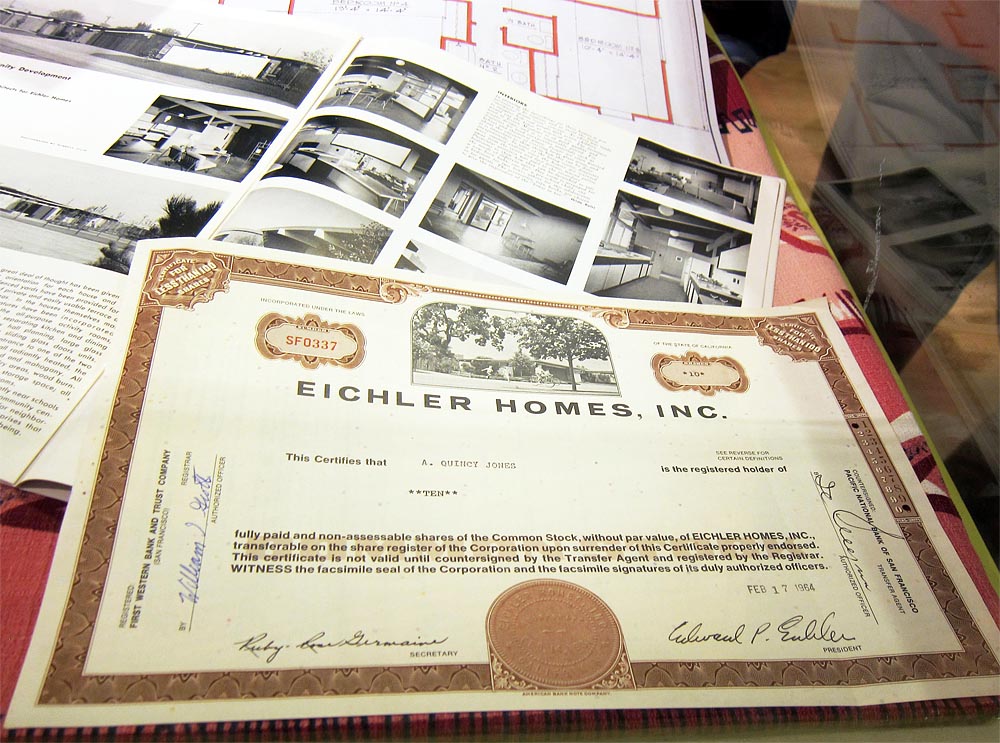 |
|
|
Naturally, the Eichler museum would be part of an Eichler neighborhood, which raises the possibilities for enhancing its value.
Which neighborhood? Of course that depends on who wants an Eichler museum strongly enough to put in the considerable effort and cost it would take to create. Two that come to mind, because of their size, community spirit, iconic nature, and attractiveness are Greenmeadow in Palo Alto and Upper Lucas Valley in Marin.
But how about Fairglen in San Jose? Greenmeadow and Upper Lucas Valley already have pools and community centers run by neighborhood associations. Fairglen does not, though it does have what one resident has called “a crazy sense of community,” and, like Greenmeadow, is on the National Register.
An Eichler museum in a place like Fairglen could double as a small community center, offering a gathering spot for book clubs, meetings, and the like.
In the best of all worlds, for the historically and aesthetically minded, every Eichler neighborhood would have one original home preserved to museum standards. Not likely, right?
But surely, somewhere, there is an Eichler home awaiting stardom.
- ‹ previous
- 588 of 677
- next ›



